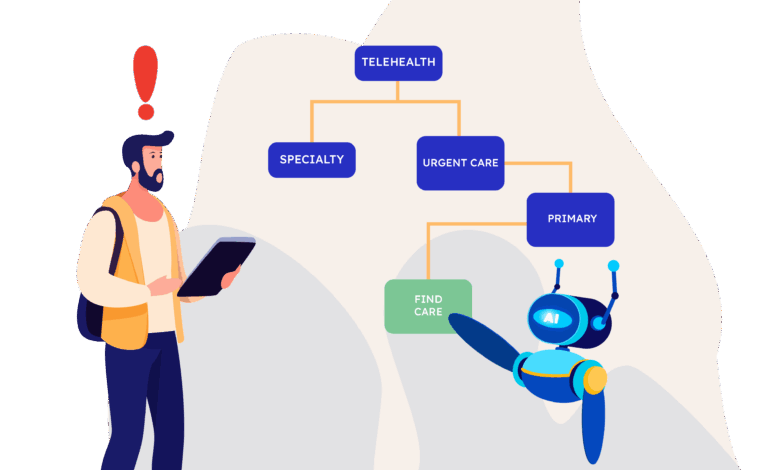
For years, artificial intelligence (AI) in healthcare has been synonymous with automation to reduce the administrative burden on physicians. From analyzing medical images and expediting prior authorizations to transcribing clinical notes, these applications, while important, merely scratch the surface of AI’s higher purpose. The deeper—and far more consequential—question is coming into sharper focus: Can AI meaningfully improve how patients experience care? And can it help them access services faster and allow clinicians to focus more on healing than paperwork?
As patient demand accelerates and the healthcare workforce thins, health systems face a profound mismatch between resources and needs. Every day, more than 11,000 Americans age into Medicare, while 2-in-5 physicians are expected to retire within the next decade. Quality care won’t be achieved by simply adding more tools, and the industry must reimagine the foundation upon which these tools operate.
Today, healthcare is built on a foundation of antiquated, fragmented, and incomplete data systems—a morass of information that acts as an anchor, weighing down the promise of AI. Even the most advanced AI algorithms can’t solve a problem it can’t see, and without accessible data, systems will fall short of improving patient care.
Without Connected Data, AI Can’t Deliver
Healthcare is responsible for a whopping 30% of the world’s data with over 40% of provider listings containing errors. Yet, much of this data remains siloed in legacy systems, buried in unstructured notes, or trapped in incompatible formats across electronic medical records (EMRs), claims databases, provider directories, and patient engagement platforms. Without harmonized data, AI systems have nothing reliable to learn from, predict with, or act upon.
The consequences are real. Without a connected foundation, even a well-trained AI model can miss a critical allergy, ignore insurance restrictions, or steer a patient toward unnecessary services. And in healthcare, those types of mistakes are expensive. AI’s ability to support clinicians and guide patients will stay limited until healthcare breaks free from siloed systems and builds a foundation where information moves as fast as care needs to. So, instead of producing breakthroughs, AI could risk complicating—or even amplifying—the deep data fragmentation that’s already endemic to the industry.
Moving forward requires building a dynamic, open infrastructure that turns the promise of AI into practice. The good news is that the foundation is starting to take shape.
Technologies are emerging that can ingest massive datasets at scale, organize them into meaningful ties, and match patients to providers in real-time—giving AI the structure it needs to guide patients more precisely across a far more responsive system.
AI Agents and the Rise of Care Navigation
As the data foundation improves, so too do the possibilities for AI to transform how patients find and receive care. One of the most promising applications is intelligent care navigation: the ability to match patients to the right care setting at the right time, based not on static directories or rigid workflows but on system-wide digital awareness.
This transition is being driven by AI agents—autonomous systems that perceive context, interpret data, and act on behalf of users. Unlike traditional search tools or symptom checkers, AI agents continuously synthesize patient signals (e.g., symptoms, location, or preferences), provider capacity (e.g., appointment slots, telehealth availability, modality options), and operational realities, like wait times and cost structures, to guide patients toward clinically appropriate, accessible care.
Consider a patient who searches online for “headache and fever.” Rather than delivering a static list of nearby doctors, an agent interprets the symptoms as potentially indicative of flu, tags it as low-acuity, cross-references real-time clinic schedules, and offers the patient a self-scheduling link for an urgent care visit five minutes away—available within 30 minutes. From the initial search to the booked appointment, the navigation happens dynamically, invisibly, and intelligently.
Health systems are beginning to deploy AI-driven orchestration platforms that associate patient demand signals with real-time capacity across care settings. The result is better patient access and a more balanced distribution of finite resources across systems under constant strain.
Reducing Friction for Providers
Better patient navigation is half the challenge, as AI must also make life easier for clinicians—doctors, nurses and supporting staff. Technology adoption can’t pile on more dashboards, alerts, or administrative headaches. Instead, it needs to fade into the background and streamline workflows so providers can spend more time with patients and less time with administrative duties.
Some of that future is already here. Ambient listening tools, powered by AI, are helping clinicians capture and summarize patient encounters automatically, cutting documentation time by 20% and giving providers a chance to reconnect with the people in front of them. Instead of toggling between screens or dictating endless notes, providers can focus on the human dimensions of care—where they are most needed.
But better workflows aren’t automatic. Poorly integrated AI can just as easily frustrate clinicians. Earning their trust means designing technology that fits how providers already work, not forcing them to adapt after the fact. Seamless integration, transparency, and clinician input can’t be afterthoughts but the starting point.
Making Healthcare Personal and Fair
Efficiency may be AI’s first act in healthcare, but personalization could be its most lasting. The technology offers the ability to personalize care at a level never before possible. With access to unified data sets—clinical histories, claims records, social determinants of health, behavioral signals—AI can identify care gaps earlier, predict risk more precisely, and tailor interventions to individual patients.
Imagine a diabetic patient living 40 miles from the nearest specialist who has not had a foot exam in over a year. An AI system analyzing clinical notes, transportation access, and utilization patterns could proactively suggest a virtual consult, an at-home screening kit, and a mobile specialist referral to address risk factors that a traditional system might overlook entirely.
Making these life-saving pathways demands models that can weave together patient records, community health trends, and predictive insights about risk and access to build a fuller picture of needs across populations, not just individuals.
But that future will only reach everyone if the data behind it does. If AI is built on narrow, incomplete, or biased inputs, it will harden the existing disparities. Without equitable data, personalized care is just another way of leaving people behind. Getting this right means building architecture that connects all patients—not just those already wired into the system.
The Next Era of Care is Within Reach
AI will not save healthcare by itself. It will not fix broken systems simply by layering on new algorithms. But when deployed thoughtfully—on top of a high-fidelity data foundation, within integrated workflows, and alongside clinicians who buy into the promise—it can create a smarter, more interconnected, and more compassionate care system.
Healthcare will forever remain a human and labor-intensive field. The most powerful applications of AI won’t replace human expertise but extend it and reclaim time for the moments that matter most. They’ll help patients access care easily, providers deliver it personally, and health systems operate intelligently—bending healthcare toward greater equity and resilience.
The work ahead is not easy. It demands investment in infrastructure and humility in design. But the future—one marked by better care outcomes—is well worth it.





